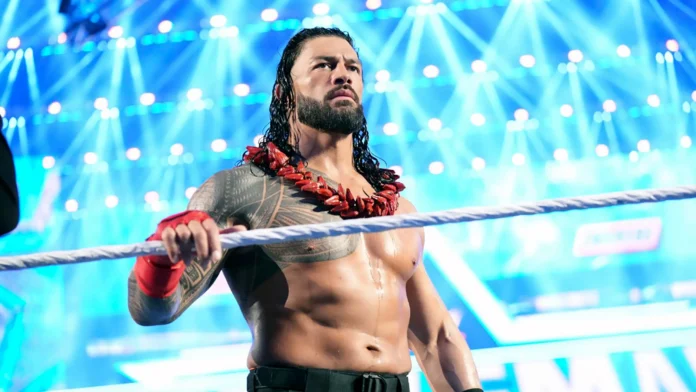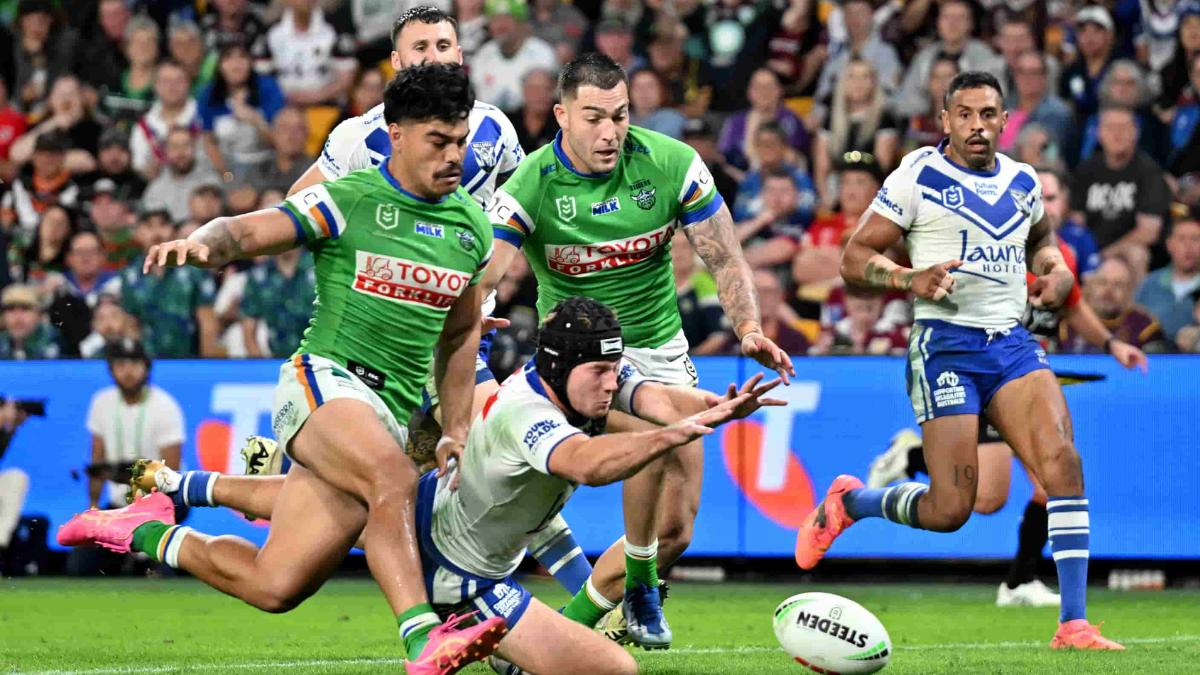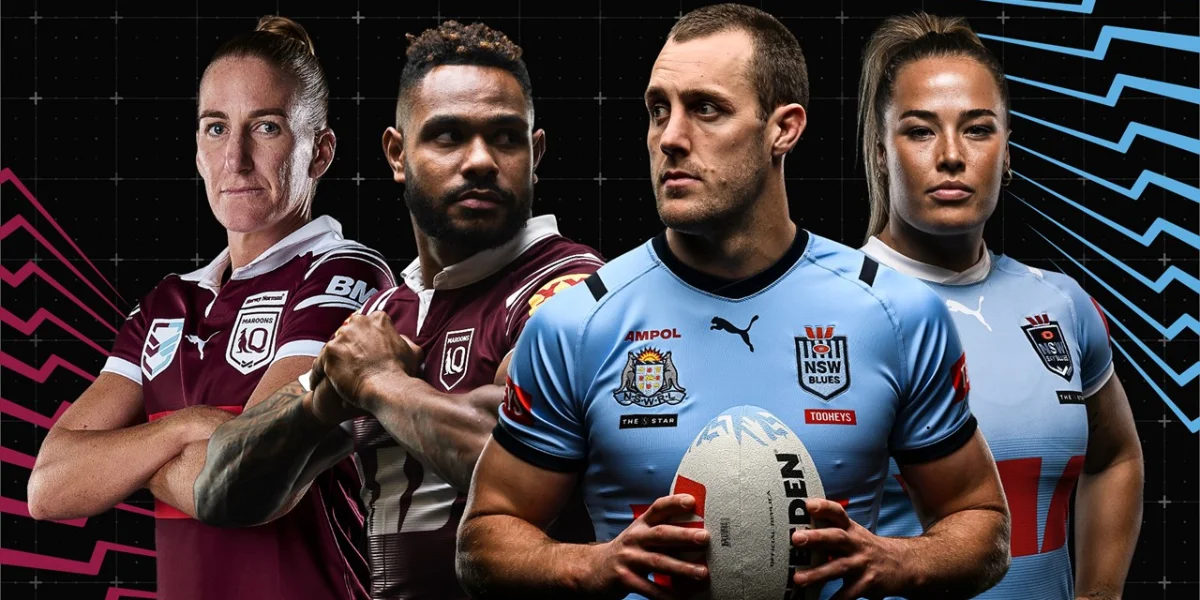Wrestling’s journey from 19th-century European freestyle wrestling to the globally recognized World Wrestling Entertainment (WWE) has sparked a critical debate: is WWE fake, or is it a real sport? The concept of kayfabe, the portrayal of staged events within the industry as “real,” has fueled discussions on the authenticity of WWE in arenas of both popularity and criticism. Despite pretences of realness, fans still question how fake WWE is, recognizing that the athleticism showcased is coupled with a carefully crafted narrative.
As the industry pioneer, Vince McMahon’s WWE has captivated audiences worldwide, leaving many to wonder why WWE is so popular if it’s fake. This article delves into the choreographed yet physically demanding world of WWE, examining the blurred lines between performance and reality, the commitment of wrestlers to their craft, and the phenomenon that keeps fans engaged despite the scripted veneer. Join us as we uncover the hard-hitting truth behind a spectacle that has become a cultural mainstay well beyond the ring.
The Origins and Evolution of WWE
The World Wrestling Entertainment, known today as a titan of the entertainment industry, has its roots deeply embedded in the early 20th century. Formed in 1953 as the Capitol Wrestling Corporation (CWC), it was the brainchild of Jess McMahon or Vincent J. McMahon. The CWC’s transformation into the World Wide Wrestling Federation (WWWF) in 1963 marked a pivotal moment when it parted ways with the National Wrestling Alliance (NWA), setting the stage for future growth.
WWE’s Key Milestones:
- 1953: Formation of Capitol Wrestling Corporation (CWC).
- 1963: The birth of WWWF post-NWA departure.
- 1982: Vince McMahon’s purchase of Capitol Sports, expanding nationally.
- 1985: The first WrestleMania event, heralding a new era.
- 1997-2002: The Attitude Era, introducing edgier storylines and iconic characters.
- 2002-2008: The Ruthless Aggression Era, rebranding to WWE post-lawsuit.
- 2014: Launch of the WWE Network, a digital streaming platform.
Bruno Sammartino’s legendary reign as the WWWF World Heavyweight Champion for 2,803 days stands as a testament to the era’s longevity and the importance of compelling characters in wrestling’s narrative. The Attitude Era further solidified WWE’s place in popular culture with the rise of superstars like Stone Cold Steve Austin and The Rock, whose personas transcended the sport.
The term “kayfabe,” originating from carnival slang, once shrouded the industry in mystery to maintain the illusion of genuine competition. However, as WWE evolved, the line between reality and performance blurred, allowing a peek behind the curtain. Today, WWE embraces this blend of sport and theatre, acknowledging its scripted nature while celebrating the athleticism and artistry of its performers. The company’s influence extends over six decades, characterized by its unique storytelling and larger-than-life characters that continue to captivate audiences worldwide.
Understanding Kayfabe in Professional Wrestling
In the dynamic world of professional wrestling, the term “kayfabe” is central to understanding the intricate balance between performance and perceived reality. Kayfabe is a wrestling term that refers to the portrayal of staged events as genuine, creating a vivid illusion for the audience. Wrestlers embody their characters with such conviction that the lines between their in-ring personas and real-life identities often blur, especially when they remain in character during public appearances and interactions with fans. This commitment to character is crucial for maintaining the narrative’s authenticity and for keeping fans deeply invested in the unfolding drama.
- The Art of Kayfabe:
- Scripted Personas and Rivalries: Wrestlers adopt fictional personas and engage in feuds that are scripted yet presented as real disputes.
- In-Character Performances: Maintaining character outside the ring, particularly during fan interactions, to preserve the wrestling narrative’s illusion.
- Storyline Integration: Utilizing real-life events, such as injuries or personal issues, to enhance storylines and add layers of complexity to the on-screen narratives.
As the digital age progresses, the once stringent adherence to kayfabe has relaxed, especially with the advent of social media, where wrestlers often showcase their real lives. Yet, the practice remains a cornerstone of professional wrestling, used strategically to advance storylines or to address real-world occurrences that impact the wrestlers’ in-ring careers. WWE, akin to a serialized TV drama, weaves intricate plots that play out both inside and outside the ring, acknowledging its scripted essence while still celebrating the physical prowess of its stars. This acknowledgment came to the forefront in 2022 when WWE officially addressed a match cancellation, citing respect issues between performers—a candid moment that peeled back the curtain on the scripted world of wrestling.
Kayfabe’s role in professional wrestling extends beyond the matches; it shapes wrestlers’ celebrity identities and influences fan perception. It represents a delicate dance between authenticity and performance, where the staged nature of the sport coexists with the wrestlers’ genuine athletic abilities and showmanship. Despite the scripted outcomes and choreographed action, the industry’s transparency about its rehearsed nature does not diminish the fans’ enjoyment. Instead, it highlights the unique blend of sports and entertainment that WWE embodies, a testament to the enduring allure of professional wrestling’s theatrical magic.
Australian Open is Breaking Prize Money Records! Read more here!
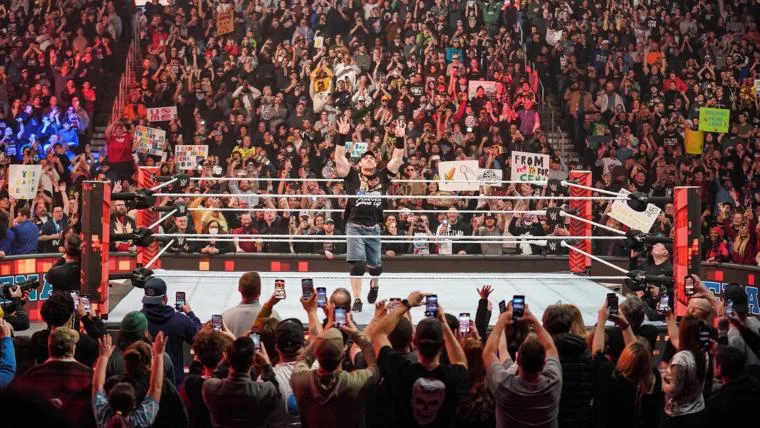
Scripted Storylines and Choreographed Fights
WrestleMania, the crown jewel of WWE events, epitomizes the grandeur of scripted storylines and choreographed fights. This spectacle is not merely about wrestling; it’s an extravaganza that includes celebrity appearances, live music, and flamboyant entrances, all meticulously orchestrated to enhance the drama and excitement. Wrestlers are briefed on their opponents and the match’s outcome, but within those parameters, they have the creative liberty to craft the narrative, often leading to a crescendo of high-stakes action.
- Match Planning and Execution:
- High-Profile Choreography: Marquee matches may be meticulously planned, such as the iconic bout between Randy Savage and Ricky Steamboat at WrestleMania, which was choreographed move-by-move to create a memorable showdown.
- In-Ring Strategy: While wrestlers are aware of their opponent’s moves, they often collaborate to seamlessly execute the sequence of events, improvising the “connective tissue” between key moments to maintain the illusion of spontaneity.
- Referee’s Role: Integral to the match, referees relay crucial information from producers, ensuring the performance aligns with the broadcast’s narrative and timing.
The WWE universe is akin to a well-oiled machine, with each match and promo serving as a cog in the larger storyline. Agents, typically retired wrestlers, guide the talent through the match structure, ensuring the televised product resonates with the audience. Wrestlers’ promos range from heavily scripted to off-the-cuff, based on their prowess with the microphone, adding layers of authenticity to their character portrayals.
- Behind-the-Scenes Coordination:
- Agent Guidance: Each match is assigned an agent who advises wrestlers on the desired outcomes and key moments to highlight, tailoring the action for television.
- Promo Flexibility: Depending on a wrestler’s skill, promos can be entirely scripted or merely outlined, allowing for varying degrees of improvisation.
WWE’s blend of athletic prowess and dramatic storytelling is a unique form of live theatre, with wrestlers performing complex stunts and maneuvers in a single take before an audience. This choreography demands significant skill and training, akin to that of stunt performers, with the added pressure of live viewership. The result is a captivating display of physicality and narrative that, while scripted, carries the risk of real injury and requires a high level of athleticism and showmanship.
- Physicality and Training:
- Stunt-Like Coordination: Wrestlers undergo rigorous training to execute choreographed moves safely, mirroring the precision of stunt performers.
- Live Performance Pressure: Performing in real-time before an audience, wrestlers must flawlessly execute their moves, contributing to the unique spectacle that is WWE.
The Athletes Behind the Characters
WWE superstars are not just athletes; they are multifaceted entertainers who often transcend the wrestling world. Dwayne Johnson and John Cena have become household names, branching out into mainstream entertainment with significant success. Their transition from the ring to the big screen underscores the versatility and charisma required to excel in WWE and beyond.
- Mainstream Success Stories:
- Dwayne “The Rock” Johnson: Transitioned from wrestling to become one of Hollywood’s highest-grossing actors.
- John Cena: Followed in The Rock’s footsteps, making a name for himself in movies and television.
John Cena and Dwayne “The Rock” Johnson are at their 50’s, you can keep your health too! Read more here!
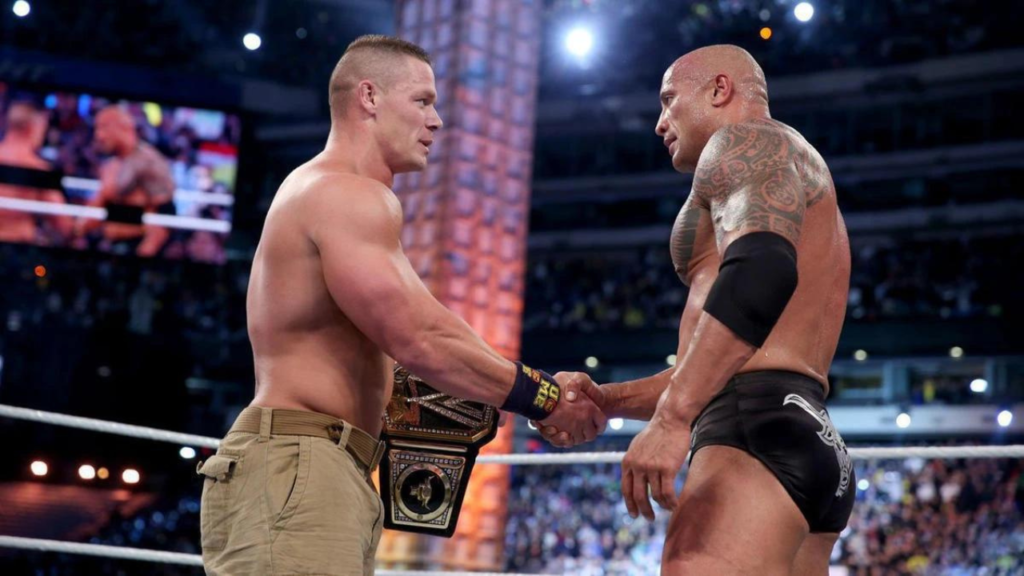
WWE’s commitment to diversity and inclusion has shattered gender norms, promoting female wrestlers from supporting roles to headline performers. The Women’s Evolution is a landmark movement within the industry, showcasing the organization’s dedication to equality and empowerment.
- Breaking Gender Barriers:
- Women’s Evolution: Transformed the role of women in wrestling from side attractions to main event headliners.
- LGBTQ+ Advocacy: Supports and features openly gay wrestlers, demonstrating WWE’s progressive stance on social issues.
Behind the scenes, WWE wrestlers are known for their camaraderie and occasional mischief. Training schools are critical for teaching wrestlers the art of performing moves safely, but it’s the personalities that fill the locker room with stories and, sometimes, controversy.
- Training and Camaraderie:
- Wrestling Schools: Where wrestlers learn to execute moves and take bumps safely.
- Backstage Antics: From pranks to eccentric behaviours, wrestlers like Sean Waltman (X-Pac) and Owen Hart are remembered for their humorous contributions to locker room culture.
The real-life challenges and backstage dynamics add layers to the characters portrayed on screen. Wrestlers like Eddie Guerrero and Kurt Angle have pushed through health issues and personal struggles, reflecting the human element in their larger-than-life personas.
- Real-Life Struggles and Influences:
- Eddie Guerrero: Performed at peak levels despite serious health concerns.
- Kurt Angle: Showcased resilience through various backstage incidents and personal battles.
The influence of key figures such as Triple H and Dusty Rhodes in nurturing talent and shaping the WWE’s future cannot be understated. Their mentorship and creative vision have been instrumental in the development of WWE’s next generation of superstars.
- Influential Mentors and Leaders:
- Triple H: Instrumental in signing top talent and developing NXT into a successful brand.
- Dusty Rhodes: Guided trainees in refining their promo skills and in-ring performances.
Real Risks and Injuries in the Ring
In the WWE, the spectacle of athleticism and drama is marred by the very real risk of injury. Despite the scripted nature of matches, the physicality involved is genuine, and accidents can have serious consequences. Wrestlers, highly trained to perform their moves with precision, still face the possibility of severe injuries that can be career-altering or even life-threatening.
- Examples of Severe Injuries in the WWE:
- Neck Injuries: Stone Cold Steve Austin’s broken neck and Tyson Kidd’s career-ending injury.
- Muscle Tears: John Cena’s torn pectoral tendon and Triple H’s torn quadriceps.
- Spinal Issues: Paige’s career-ending spinal injury and Edge’s spinal stenosis.
- Facial Traumas: Cesaro’s dental injury and Ridge Holland’s broken nose.
Training and rehearsals are designed to minimize damage, yet the physical efforts exerted can lead to broken bones, torn muscles, and concussions. The risks are exemplified by incidents such as the Undertaker’s burns from pyrotechnics or Cody Rhodes wrestling with a torn pectoral muscle. These athletes endure real pain and put their bodies on the line, sometimes with lasting effects on their health and careers.
- Injury Prevention and Management:
- Rehearsal: Wrestlers practice moves to ensure safety and minimize harm.
- Adaptation: Matches must be adapted on the fly when accidents occur.
- Safety Measures: Protocols are in place to prevent injuries, with referees and medical staff on standby.
Injuries can be used in storylines, with some exaggerated or fabricated to facilitate a wrestler’s need for time off. However, when injuries occur due to botched moves or the demanding nature of matches, they are 99% real, with recovery times varying from weeks to months, or in some cases, leading to retirement. The WWE’s acknowledgment of these risks underscores the authenticity of the dangers faced by wrestlers despite the choreographed nature of the sport.
WWE’s Impact Beyond the Ring
WWE’s influence radiates far beyond the confines of the ring, permeating various facets of global culture and commerce. Its superstars have become marketable icons, their larger-than-life personas and unique costumes inspiring fashion trends and a vast array of merchandise. This blend of athleticism and showmanship has not only captivated audiences but also inspired them to embrace their individuality through WWE-themed apparel and accessories.
- Cultural Impact and Merchandising:
- WWE superstars are fashion icons who influence trends and personal style.
- An massive range of merchandise, from action figures to apparel, catering to fans of all ages.
Social media platforms serve as WWE’s digital arena, engaging fans with exclusive content, real-time updates, and interactive campaigns. This digital connectivity has been pivotal in maintaining relevance across generations, showcasing WWE’s adaptability in an ever-evolving media landscape.
- Digital Engagement and Generational Appeal:
- Robust presence across social media platforms, engaging a global fanbase.
- Content strategies tailored to resonate with both long-time enthusiasts and newer audiences.
Philanthropy is another arena in which WWE has made a significant impact. The company and its superstars actively participate in charitable initiatives, demonstrating a strong commitment to community and social responsibility. From granting wishes to children with life-threatening illnesses to partnering with organizations advocating for social causes, WWE’s philanthropic efforts reflect its dedication to making a positive difference in the world.
- Philanthropic Endeavors and Social Responsibility:
- Partnership with Make-A-Wish, granting over 6,000 wishes and counting.
- Support for various social campaigns and non-profit organizations, including Susan G. Komen and the Special Olympics.
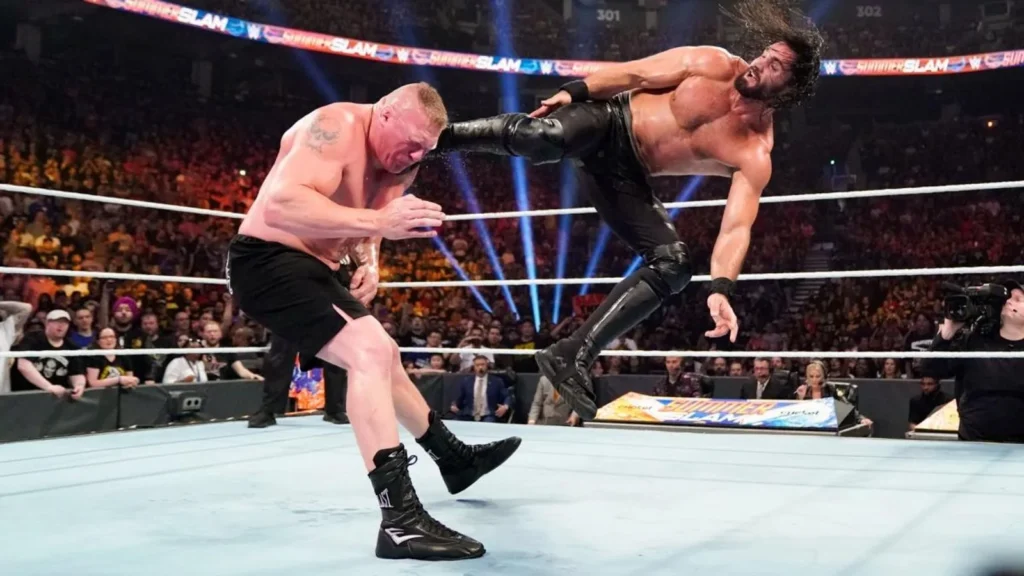
Wrapping Up: WWE Is It Fake?
As we’ve navigated the theatrical world of WWE, the fusion of athleticism and narrative has emerged as the cornerstone of its allure. The exploration of kayfabe, the choreography of iconic matches, and the transformation of wrestlers into mainstream celebrities underpin the organization’s cultural impact. WWE’s ability to generate excitement and inspire fans speaks to the enduring magic of its elaborately staged yet genuinely demanding performances, a testament to the artistry and physicality of its superstars.
WWE’s story is one written in the hearts of fans across the globe, marked by the real risks taken in the ring and the transformative power it holds beyond the ropes. As the spectators of this grand spectacle, we are invited to witness the drama, the triumphs, and the passion. To delve deeper into the WWE Universe and join the legions of followers captivated by its unique blend of sport and theatre, explore the extensive content and join the community here.
FAQs
Has the scripted nature of WWE always been acknowledged?
No, for many years, wrestling promoters maintained the illusion that wrestling was a genuine contest. However, in 1989, Vince McMahon, the long-time executive of WWE, publicly acknowledged that the events and outcomes are scripted, confirming what many had suspected.
Are WWE matches authentic or staged?
WWE matches are staged, live performances where the storylines and outcomes are scripted. However, the athleticism and the physical toll on the performers are very real. While certain moves, like the superkick and pedigree, are executed in a way to avoid actual impact, the risk of pain and injury is still present.
Do WWE wrestlers actually get injured, or is it part of the act?
While WWE matches are scripted, the physicality involved is genuine, and injuries can and do occur. Wrestlers are essentially live stunt performers, and despite not intending to harm each other, the stunts they perform are real and can lead to serious injuries if executed incorrectly.
Is Wrestlemania a genuine competition or a performance?
Wrestlemania, like all WWE events, features performances by highly trained athletes where the outcomes are predetermined. The wrestlers collaborate to plan and execute the choreography, focusing on delivering a safe and thrilling show for the fans.

